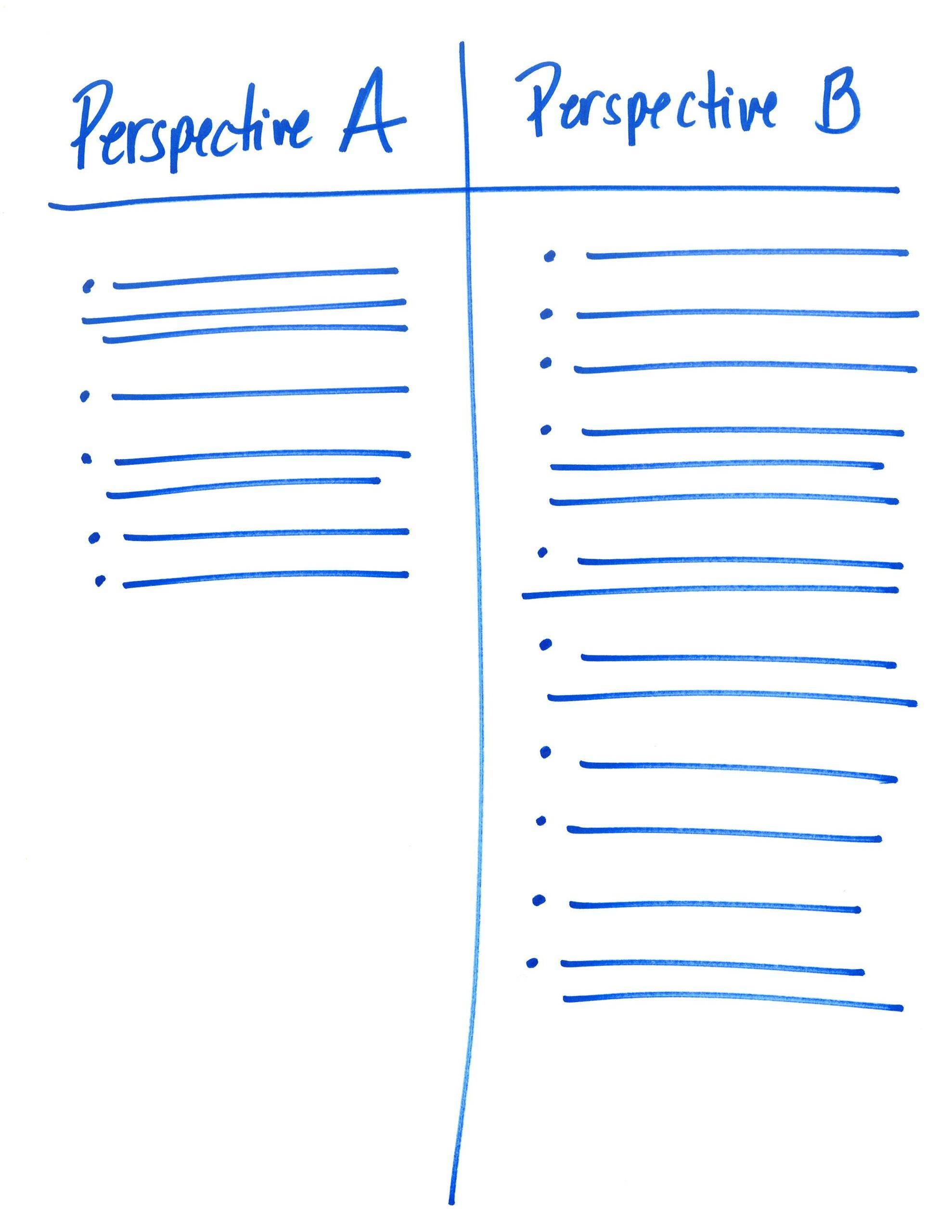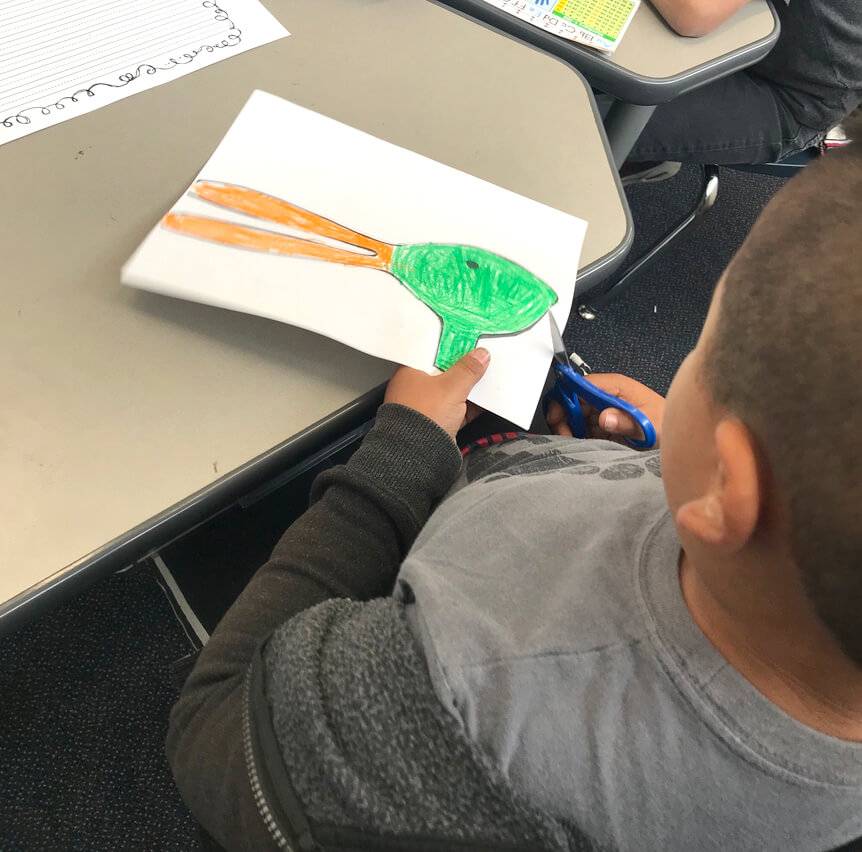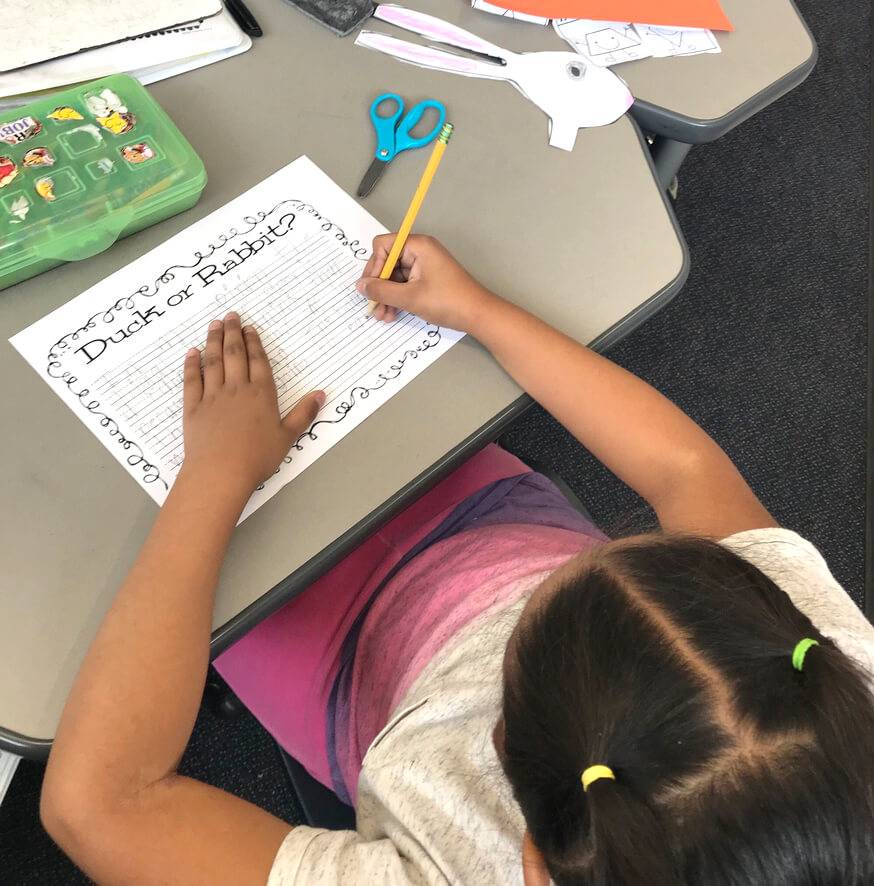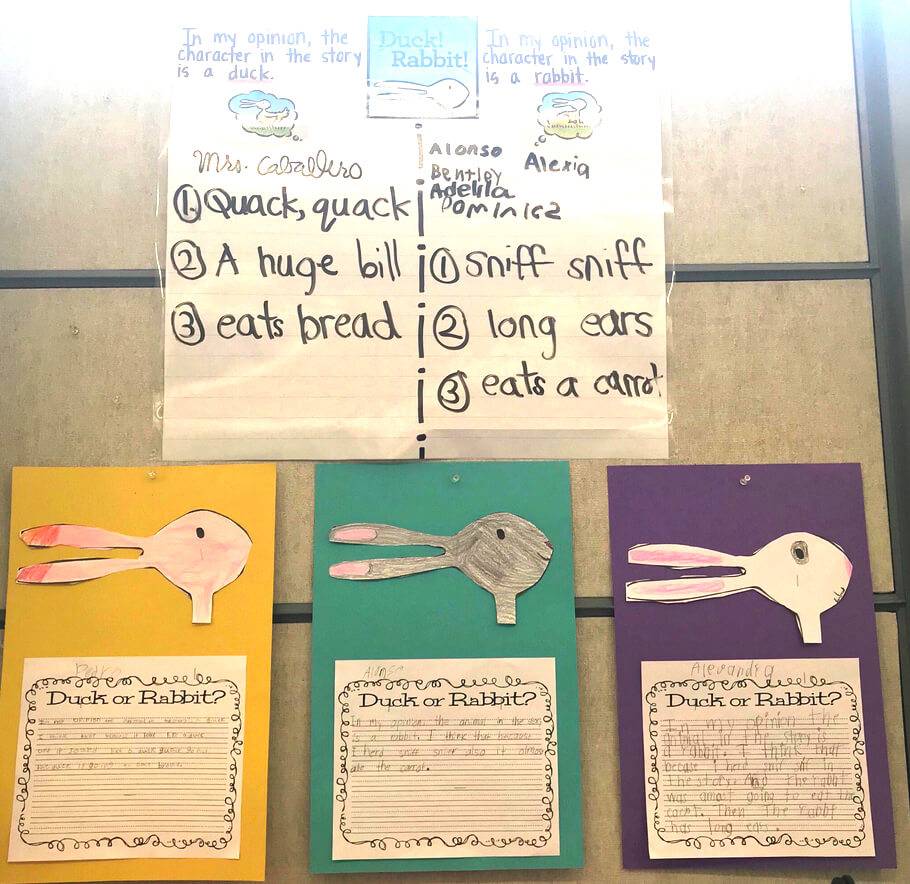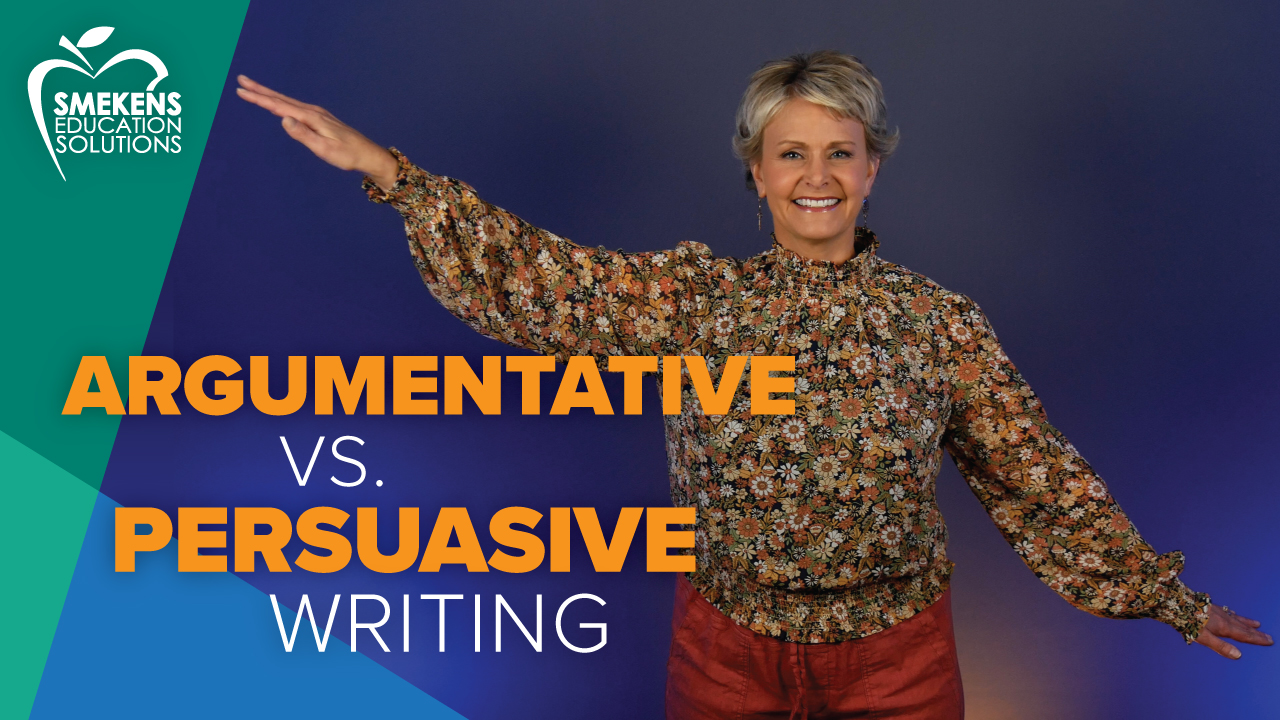Learning Center
writing
Align with the strongest position
february 19, 2018
Persuasive and argumentative writing tasks typically begin with students announcing which side they agree with. This is before reading, researching, or even considering all possible perspectives.
This might not be a problem if the evidence always supported their initial opinion. (Ever have a student write a thesis and then struggle to find facts to back it up?) But in most cases, students are “choosing” a side based on minimal background knowledge and gut instincts. If we want students to select topics that can be developed fully, we need to walk them through four key steps.
 1. Identify the different opinions.
1. Identify the different opinions.
Create a simple T-Chart and label the top of each column with the different perspectives.
2. List strengths for both sides.
Build a list of facts, quotes, information, and other details in support of one side. Then repeat this process just as passionately for the other perspective.
3. Study the lists to determine the strongest position.
Before students pick a side, they should read their lists carefully. Explain that the stronger position is the longer one–the one with the most evidence.
[PRIMARY NOTE: Typically, when executing these four steps with a picture book like Hey, Little Ant or Duck! Rabbit! the list is equal. For every page of details supporting perspective A, there is a page of supporting evidence for perspective B. Consequently, strength won’t be determined by quantity. It’s okay for students to “choose” their side at this point. Although one side isn’t stronger than the other, they are learning the 4-step process to be applied to future topics that aren’t so equal.]
4. Align with proof, not preference.
Now that students have deemed one side stronger, that is the perspective they should write from. Knowing that their task/assignment is to write a powerful persuasive/argumentative paper, explain that it’s much easier to accomplish this if they write from the strongest perspective.
As easy as this sounds, be prepared. Some students may acknowledge that a perspective is stronger on paper, however it doesn’t coincide with their personal, emotional, and/or spiritual beliefs. Consequently, they don’t want to write from that position. In these cases, explain that they should see themselves like a lawyer. Consider a defense attorney who doesn’t like his client and maybe even doesn’t believe him. He, too, must present the best argument possible despite his personal opinion.
For those still struggling, clarify the difference between owning the opinion and merely authoring it. In other words, all references to I, me, or my should be avoided in lieu of phrases like proponents believe, advocates think, etc. Students are not sharing a personal opinion in these pieces; they are simply authoring a perspective.
Teacher Comments
Wendy Caballero, 1st grade teacher at Romoland Elementary (Menifee, CA) shared her students’ experience with opinion writing as they offered their duck or rabbit opinions.

